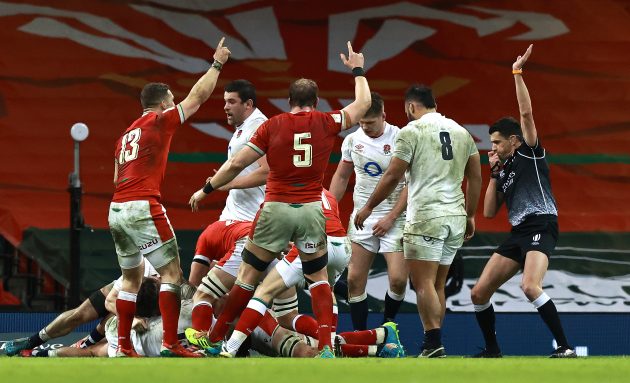Geraint Davies and the team at Bajad8a break down the building blocks of elite rugby. Here they look at being efficient on attacking forays
Rugby Explained: The importance of executing in opposition 22
Rugby has changed significantly over the years and continues to evolve with each game played. A key driver behind this evolution is the pursuit of new ways to enter opposition territory and score points, and in preventing the opposition from entering your own half of the pitch.
It follows therefore, that the closer a team gets to the opposition try-line, the easier scoring points through penalty kicks becomes, and indeed the more likely it is that they will score a try. A key metric to help determine how effective a team is at scoring points is ’22 entries’ – a concept first publicised by Simon Gleave.
A 22 entry is defined in slightly different ways, depending on the analytics company tasked with collecting the data. However, the team at Bajad8ta have used Gleave’s original idea, to define a 22 entry as: “a controlled possession within the opposition 22m”.

Hugo Keenan scores for Ireland against Italy (Getty Images)
Therefore, if a team has a lineout within the opposition 22m following a penalty kick to touch, but they did not win the lineout, this would not count as a 22 entry as they were not controlling possession of the ball. If a team enters the 22m and is then pushed back by the defence, but then manage to re-enter the 22m during the same possession, this would count as a single 22 entry. It is logical to suggest that a team who enter the opposition 22m on the most occasions will score the most points. However, it is not quite so simple. Let’s look at some recent examples.
When Wales defeated England 40-24 in the 2021 Six Nations, England entered the Wales 22m area on eight occasions, scoring 18 points. Wales did so on three fewer occasions (five) but scored 31 points.
Of importance here is a team’s efficiency within the 22m and not just the number of times they enter. Teams who can enter the opposition 22m and come away with points each time (known as, points per entry or PPE) have a very good chance of winning, provided of course that you are able to stop the opposition from doing the same in their own 22m. A good example of this can be found in Wales’ narrow 25-24 victory over Scotland at Murrayfield.
Both teams achieved six 22 entries and scored all of their points from these entries. Wales earned a 22m efficiency score of 4.2 point per entry compared to Scotland’s 4 points per entry.

Argentina celebrate beating New Zealand (Getty Images)
A further, perhaps clearer example of the importance of efficiency was Argentina’s historic first win over the All Blacks in the 2020 Tri-Nations. During this game Argentina achieved five 22 entries scoring 16 points (3.2 PPE), while New Zealand had double the amount of opportunities within the opposition 22m but only scored 15 points (1.5 PPE).
Having an outstanding defence and taking your chances is obviously a key part of winning rugby matches. But there are always exceptions. Staying with Argentina, let’s consider the first of two drawn games with Australia, in the 2020 Tri-Nations.
In their first encounter Australia had 70% territory and five entries into the Argentinian 22m, but only came away with an efficiency score of 1.8 PPE. Interestingly, Argentina’s score was even worse at 0.75 PPE, with only four 22 entries. Rather than needing to invade deep into Australian territory, Argentina relied upon the boot of Nicolas Sanchez and were happy to take shots at goal from distance. They supported this tactic with an extremely well-structured exit strategy from kick-off reception, and an outstanding defence.
No team has experienced more success at international level than New Zealand. As demonstrated by the table below, they rely heavily on entering the opposition 22m in order to score points.

Points scored by Argentina, Australia, and New Zealand during their 2020 tournament.
As can be seen from these examples, it’s essential that teams know their strengths and build their strategy around the ways they can best score points, as well as how they can stop the opposition scoring points.
When playing against Argentina it would be essential to avoid giving away penalties in the middle third of the field, while preventing New Zealand from entering your 22m would be a key focus when playing them. Far easier said than done of course and that is one of the many things I find interesting about analysing and coaching rugby union!
Can’t get to the shops? You can download the digital edition of Rugby World straight to your tablet or subscribe to the print edition to get the magazine delivered to your door.
Follow Rugby World on Facebook, Instagram and Twitter.





